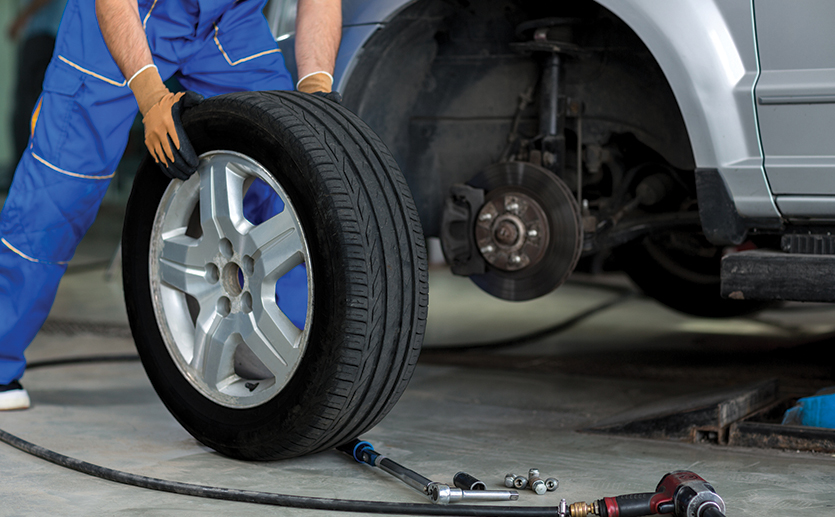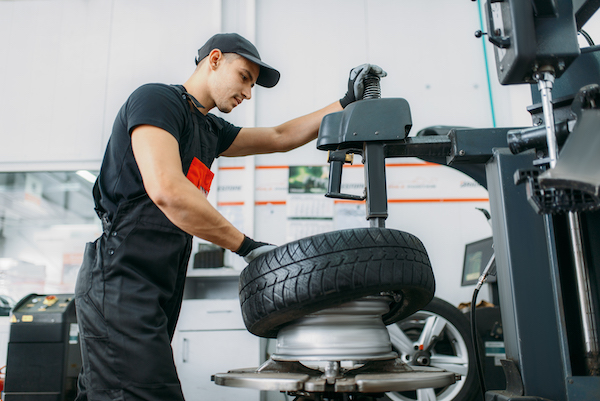Drive with Confidence: GMC Tires Service at Morris Tires
Drive with Confidence: GMC Tires Service at Morris Tires
Blog Article
Tire Service: The Influence of Weather
When it comes to ensuring ideal performance and security when driving, understanding the effect of climate condition on tire solution is vital. From scorching warmth to icy roadways, each climate element can substantially influence tire capability and general driving experience. By diving into the effects of varying climate condition on tires, vehicle drivers can gain valuable understandings that might improve their vehicle's performance and long life. In this conversation, we will discover the detailed relationship in between weather condition conditions and tire solution, clarifying the importance of weather-specific tire maintenance techniques and considerations.
Heat and Tire Efficiency
When exposed to high temperatures, tires experience modifications in efficiency that can significantly affect car safety and security and handling. The warmth produced from extended driving or warm weather conditions creates the tire rubber to soften, bring about decreased step life and enhanced wear. As the rubber becomes softer, the tire's hold when driving decreases, influencing braking ranges and general traction. In severe instances, extreme warm can also cause tire blowouts, positioning a severe safety and security danger to the vehicle and its occupants.

Cold Weather Results
Cold weather condition problems can have a substantial impact on tire efficiency and security. In chilly weather condition, tires may likewise lose air pressure more rapidly, which can influence dealing with and gas efficiency.
To alleviate the impacts of cool climate on tires, it is crucial to consistently examine tire pressure and inflate them to the maker's advised degrees. Making use of wintertime or all-season tires developed for cool climate problems can also boost grip and grip on icy or snowy roads. Proper tire maintenance, including normal evaluations for wear and damage, comes to be even more vital during cooler months to ensure optimal performance and safety and security.
Rainy Issues Influence
Tires with worn-out footsteps are extra susceptible to hydroplaning, where a layer of water constructs up between the road and the tire surface, leading to loss of grip. To fight this, drivers should routinely inspect their tires for appropriate walk deepness and think about spending in tires especially developed for wet conditions.
Moreover, wet weather can likewise reduce visibility, making it testing for vehicle drivers to see the roadway in advance plainly (GMC Tire Service). In such conditions, it is crucial to change driving rates accordingly and keep a safe following range to permit abrupt quits. Correctly filled with air tires can likewise help in maintaining control on wet roadways by offering better handling and hold
Snow and Tire Security
Snow-covered roads pose unique difficulties for vehicle drivers, highlighting the significance of appropriate tire option and upkeep. When driving in snowy problems, having the appropriate tires can make a substantial distinction in safety and security and performance. Wintertime tires are developed with special rubber compounds and walk patterns to supply better click traction on snow and ice contrasted to all-season tires. The much deeper treads and sipes of wintertime tires assist grip the roadway much better, reducing the danger of slipping and moving.

It is essential to comply with supplier directions when utilizing and setting up tire chains to stop damages to the tires and automobile. By selecting the ideal tires, preserving appropriate rising cost of living, and taking into consideration added traction help like tire chains, chauffeurs can enhance their safety and security when browsing snow-covered roads.
Weather-Related Tire Maintenance
Weather-related tire maintenance includes an array of techniques intended at guaranteeing optimal tire function and long life in different weather condition circumstances. One vital aspect of weather-related tire upkeep click now is tire stress guideline. Examining tire walk consistently and changing tires when walk wear gets to a specific depth is essential for maintaining grip and security in unfavorable climate.
Verdict
In final thought, climate condition have a substantial effect on tire performance and security. From warmth influencing tire stress and use to chilly weather decreasing traction, it is vital to take into consideration the weather condition when preserving and making use of tires. Rainy conditions can decrease grip and lead to hydroplaning, while snow can increase the risk of accidents if tires are not appropriately geared up. Weather-related tire upkeep is essential in making sure ideal performance and security when traveling.
In this conversation, we will certainly explore the complex connection in between climate problems and tire service, shedding light on the value of weather-specific tire upkeep practices and factors to consider.

Report this page